VTNE Review: Common bird diseases
1/148
There's no tags or description
Looks like no tags are added yet.
Name | Mastery | Learn | Test | Matching | Spaced |
|---|
No study sessions yet.
149 Terms
anatomy of the heart
larger and is designed for rapid depolarization
aortic arch is derived from the right not left
designed for high performance
heart disease is rarely recognized
clinical signs of heart disease
listlessness
ascites
exercise intolerance
cough
dyspnea
murmur or rhythm disturbance found on auscultation
syncope
diagnosis of heart disease
auscultation of the heart
radiography
ECG
Echo
ruling out any bacterial or viral causes of systemic disease
treatment of heart disease
drugs used for other animals may be adapted for use in pet birds
digoxin
diuretics
bronchodilators
beta blockers
± pimobendan
diet changes to prevent vitamin E, selenium, and amino acid deficiencies
hemorrhage
related to trauma
fractured beaks, broken nails, and injured blood feathers are the most common causes of bleeding in pet birds
clinical signs of hemorrhage
bleeding (external)
neurological dysfunction (if brain is involved)
acute death
diagnosis for hemorrhage
history of trauma to site of bleeding
history of head trauma
CBC and TP may indicate chronic blood loss from disease processes
treatment of external hemorrhage
pressure to site will often be enough to stop the bleeding
if bleeding is severe, electrocautery, chemical cautery, or ligation may be used once the bird arrives at the clinic
treatment of blood feather injury
blood feathers are immature feathers that contain a large blood vessel that will bleed if broken or cut
they will continue to bleed unless pulled from the feather follicle
feather must be grasped close to the skin and pulled out to stop the bleeding
treatment for internal hemorrhage
supportive measures including fluid therapy
most cases of this type of hemorrhage will be found on necropsy
pericarditis and myocarditis
seen infrequently in pet birds
cause of both diseases is usually bacterial septicemia
arteritis
reported in birds usually as a result of thrombosis from a resulting infection such as bumble foot
not a common disease
anemia
result of chronic disease or parasitism
not common finding in pet birds
acute death related to stress
seen especially in budgies or smaller birds
related to excessive epinephrine release and in some cases of heart failure, aortic rupture, or both
describe digestive tract
esophagus, found on right side of the neck contains the crop used for food storage
from the crop, food passes to the proventriculus (glandular stomach), to the ventriculus (gizzard or grinding stomach), and then into the small intestine
then the large intestine, the colon
feces pass into the cloaca
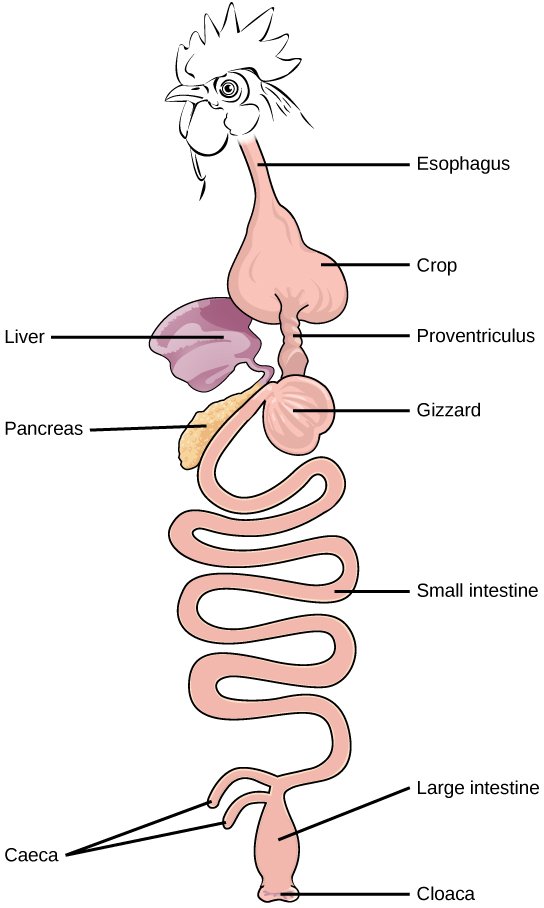
signs of regurgitation (courtship behavior)
seen regurgitating food
usually a healthy appearing male bird
no other signs of disease, normal appetite, normal feces
diagnosis of regurgitation
gram staining of crop to rule out bacterial or fungal infection
history of other breeding behavior
treatment of regurgitation
frequent changes in toys and cage furniture
avoidance of activities that stimulate behavior
extending the daily period of darkness to reduce mating behavior
hormone therapy
crop stasis
primary causes include:
foreign objects
infection
atony from overstretching
dehydrated food particles
low environmental temperatures
feeding food that separates in the crop
overfeeding in older birds
clinical signs of crop stasis
failure of the crop to empty in an appropriate time frame
regurgitation of food
history of ingestion of foreign body
diagnosis of crop stasis
palpation of crop to rule out the presence of foreign bodies
gram staining or culture and sensitivity for infectious agents
± radiology to rule out foreign objects
treatment of crop stasis
stop feeding until crop motility returns to normal
evacuate crop contents using a feeding tube and syringe
lavage the crop by using warm saline and gentle massage to break down any impactions
replace hand feeding diets with warm fluids to prevent dehydration until crop motility returns
administer antibiotics based on culture and sensitivity
foreign objects often may be removed with alligator forceps
crop burns
occur in birds when owners feed diets that are heated to extreme temperatures
primarily a result of using a microwave for heating the food
if the food is not mixed well after heating, the very hot food may be placed into the crop, causing a severe burn
damaged tissue will become necrotic and slough, often leaving a fistula in the crop
clinical signs of crop burns
discolored areas in the skin over the crop
leakage of food or fluid from the crop onto skin
pain on palpation of the crop
reluctance to eat
diagnosis of crop burns
good examination of crop an surrounding tissue
demonstration of a fistula opening in the crop
treatment of crop burns
for severe burns: perform surgical debridement of the damaged area, with repair of fistulous opening
for mild burns:
withhold food for several feedings
replace food with a balanced electrolyte solution
treat with antibiotics if needed
beak deformities
malformed beaks are the result of trauma, malnutrition, improper hand feeding techniques, mite infestation, bacterial or viral disease, or liver dysfunction
may result in an inability to eat properly and digestive problems
mite infestation with Knemidokoptes may result in damage to the beak
clinical signs of beak deformities
observation of uneven wearing of the beak
malocclusion of the beak
overgrowth of the beak
history of trauma or signs of trauma: bite wounds, bruising of beak soft tissues, or disruption of the horny surface
diagnosis of beak deformities
clinical chemistries, CBC to rule out nutritional disorders
gram staining with culture and sensitivity- choanal slit
treatment of beak deformities
permanent deformities may be partially corrected by corrective grinding using a Dremel
early correction of malnutrition or calcium deficiency may result in some improvement
fractures or damage to the horny beak can be repaired with medical acrylics
proventricular dilation disease (Macaw wasting disease)
characterized by inflammation of both central and peripheral nervous tissues, with migration of lymphocytes and plasma cells into the nerve ganglia located in the proventriculus and other parts of the digestive system
affects adult birds more than juvenile
cause is the Borna virus
transmission is bird to bird contact, feces, feather dust, and contaminated environments
clinical signs of macaw wasting disease
weight loss
regurgitation
depression
swollen abdomen, diarrhea
passage of undigested seeds in feces (most important sign)
neurological signs: ataxia, abnormal head movement, seizures, motor problems
diagnosis of macaw wasting disease
history and clinical signs
radiography: dilated proventriculus
increased creatine phosphokinase concentration
increase in barium transit time as seen on radiographs
pro-ventricular or crop biopsy for typical histopathologic signs
PCR test
treatment of macaw wasting disease
no cure
cyclosporine may be of use
cyclooxygenase-2 enzymatic anti-inflammatory drugs may decrease symptoms
affected birds should be isolated
enteritis
common in pet birds
diet change may result in loose stools
one of the most common causes of diarrhea in the pet bird is a bacterial infection which is usually caused by gram negative organisms commonly found in the environment
viral infections as well
clinical signs of enteritis
anorexia
diarrhea
soiling of feathers around. thevent
polyuria or polydipsia
tenesmus (straining)
fluffing
diagnosis of enteritis
gram staining; culture and sensitivity
ruling out other systemic diseases with serum chemistries, antibody-antigen titers, tests for toxins such as lead
ruling out mycotic infections
history of diet change, excessive external temperatures, etc
treatment of enteritis
depends on the cause
antibiotics should be based on gram staining and culture and sensitivity tests
yogurt or probiotics should be fed to normalize intestinal bacteria
SQ balanced electrolyte solutions should be given if needed
intestinal protectants such as kaolin and pectin may be of some use
cloacal prolapse
can be caused by diarrhea, efforts by female birds to pass retained eggs
eversion of the cloaca to the outside of the bird prevents urine and feces from being passed; allows the tissue to become contaminated, dry, and necrotic, and may become life threatening
clinical sign of cloacal prolapse
tenesmus and diarrhea
appearance of a pink to red blob of tissue from the cloaca
diagnosis of cloacal prolapse
physical exam and history
treatment of cloacal prolapse
gently clean the exposed tissue
reduce the swelling and lubricate the exposed tissue
replace healthy tissue into the cloaca manually, and place a purse string suture around the vent to prevent recurrence
sutures are removed in 5 to 7 days
treat the diarrhea or cause for straining
is tissue is necrotic when presented, surgical repair may be necessary
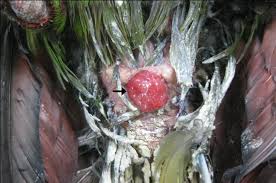
cloacal papillomas
tend to occur most frequently in macaws, cockatoos, and some Amazon parrots
can appear as protruding red masses from the vent or may be visualized only on internal examination of the cloaca
should not be used for breeding
clinical signs of cloacal papillomas
tenesmus
soiled vent feathers
hemorrhage in the vent area
pasting of the vent area with feces, foul odor, and scalding of the area
diagnosis of cloacal papillomas
visualization of the masses in the cloaca
application of 5% acetic acid will turn abnormal tissue white
biopsy
treatment of cloacal papillomas
most will respond to cryosurgery, but rapid regrowth may occur
autogenous vaccines may be prepared from removed tissues
hepatitis
at least 80% of the liver must be damaged for clinical signs to occur, so can be difficult to diagnose
do not experience jaundice
some frequent causes are bacterial infections, chlamydial infections, viral infections, hepatic lipidosis, and toxins
clinical signs of hepatitis
weight loss
anorexia
weakness
Pu/Pd
ascites
coagulopathy
melena or green urates
diagnosis of hepatitis
CBC
bacterial cultures (from liver biopsy)
serum chemistries (AST is found in high concentrations; creatine kinase)
bile acid level >120
radiography: identify hepatomegaly and ascites
US: may be useful in larger birds for localization of hepatic lesions such as granulomas or neoplasms
liver biopsy
chlamydia or viral serology
treatment of hepatitis
lactulose is given orally to reduce ammonia levels
colchicine may aid in limiting fibrosis of the liver
eliminate the underlying cause of disease if possible
supportive care:
oxygen therapy
fluids
removal of ascetic fluids to aid in breathing
IV dextrose
colloid administration
diet therapy:
hand feeding with protein restricted diet
vitamin therapy, especially A, D, E, K, and B complex
clinical signs of intestinal parasites
weight loss, depression
diarrhea, melena
bowel obstruction (Ascaridia)
debility
feather picking (giardia)
diagnosis of intestinal parasites
fecal floatation
direct smear, when it is necessary to identify the organism
clinical signs
treatment of intestinal parasites
Ivermectin
Metronidazole
Praziquantel
cleaning up the environment
removal of the bird from the source of infection
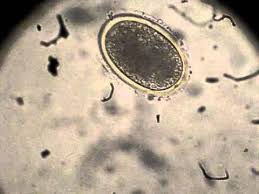
Ascaridia
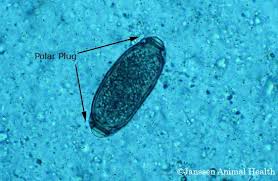
Capillaria
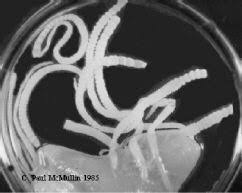
Cestodes
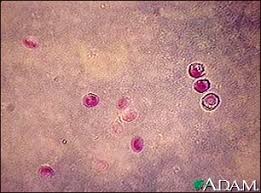
Cryptosporidium
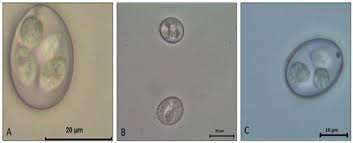
Eimeria
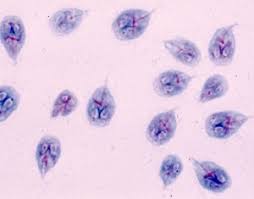
Giardia
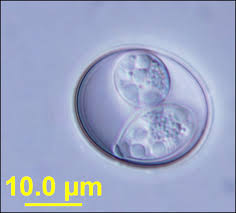
Isospora
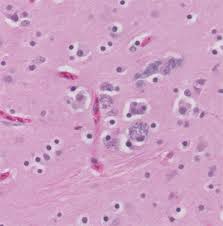
Sarcocystis falcatula
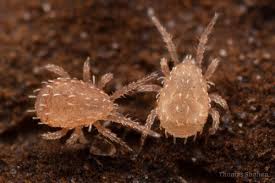
Sternostoma tracheacolum
what is the proper order for treating crop stasis in a baby bird?
flush the crop with warm saline, and then refill the crop with a balanced electrolyte solution
on finding papillomas in the cloaca of a blue and gold macaw, the veterinarian should tell the owners what?
this disease is treatable but they should not be used for breeding
what food is most likley to cause loose stools if added to a bird’s diet?
watermelon
what clinical chemistry test is useful for diagnosis of liver disease?
ALT, AST, and bile acids
the intestinal tract of the bird contains primarily what type of bacteria?
gram positive
true or false: cloacal polyps should be treated before using the bird for breeding
false, they should not be used for breeding
this organ is the glandular stomach of the bird
proventriculus
what is the most common disease associated with the thyroid gland?
iodine deficiency, resulting in formation of goiter
clinical signs of hyperthyroidism
dyspnea
characteristic squeaking noise on inspiration
regurgitation or repeated swallowing when eating
diagnosis of hyperthyroidism
history of a diet low in iodine (all seed diet)
the enlarged thyroid is usually not palpable
treatment of hyperthyroidism
increase the level of iodine in the diet by oral administration of a dilute Lugol iodine solution via the water
improvement in diet can be achieved by addition of vegetables that contain iodine through formulated pelleted diets that contain iodine
clinical signs of diabetes mellitus
polyuria/ polydipsia
weight loss in the presence of a voracious appetite
depression, lethargy
diagnosis of diabetes mellitus
persistent glycosuria
serum glucose levels are persistently increased to >600 mg/dL
serum glucagon levels should be obtained
treatent of diabetes mellitus
supportive care: fluids, hand feeding, correction of electrolyte disorders
a serial blood glucose curve should be performed
insulin therapy should be instituted; twice daily injections
addition of a high fiber diet to decrease postprandial hyperglycemia should be considered
goiter is a common problem in parakeets because of what?
a seed diet low in iodine
compared with mammalian thyroid glands, which type of cell is missing from the avian thyroid gland?
C cells
lack of the hormone glucagon in the avian patient may result in what?
hypoglycemia
filoplumes
modified feathers present at the margins of the lids and function like eyelashes, for protection and tactile stimulation
Cryptophthalmos
abnormal fusion of skin over globe and orbit
seen in cockatiels
reduces the palpebral fissure in both length and width
treatment of cryptophthalmos
surgical removal of excess tissue has not been successful in curing this condition
topical application of cortisone-containing eye ointment may help after surgery
periocular swelling
may result from disorders of the eyelids, the infraorbital sinuses, or less commonly, the conjunctiva
trauma to the periocular tissue may also cause swelling
clinical signs of periocular swelling
eyelids or periocular tissue will appear swollen and red or scaly
palpebral fissure may be reduced and the nictitans may be prolapsed
feather loss around the eye may be present
facial swelling may be present with evidence of rubbing
± scabbing of tissues is seen
diagnosis of periocular swelling
complete ocular exam
skin scraping to rule out Knemidokoptes infection
skin biopsy of necessary
good dietary history
gram staining or culture and sensitivity of the infraorbital sinuses to rule out bacterial infection
treatment of periocular swelling
maintain adequate corneal lubrication with the use of ophthalmic ointments
repair eyelid laceration is present
vitamin A therapy may help some birds
flush the sinuses; some may have to be trephined to remove debris
conjunctivitis
caused by trauma, bacterial infections, viral infections, and vitamin A deficiencies
organisms capable of causing it include Chlamydia, Mycoplasma, E. coli, Pseudomonas, Bordatella, Mycobacterium, and Streptococcus
signs of conjunctivitis
hyperemia
blepharospasm
photophobia
ocular discharge
swelling
diagnosis of conjunctivitis
culture and sensitivity of the conjunctiva and cornea
corneal staining
cytology of the conjunctiva
viral serology or cultures to rule out systemic causes
treatment of conjunctivitis
broad spectrum topical ophthalmic antibiotics
oral or systemic antibiotics if respiratory disease or systemic disease is involved
corticosteroids if conjunctivitis is nonsuppurative and if no corneal ulceration is present
cataracts
frequently noted in long living psittacines
may also be seen in response to trauma, nutritional deficiencies, and other ocular disorders
clinical signs of cataracts
lens opacity identified visually
owner may report vision loss
treatment of cataracts
surgical removal of the lens if other intraocular disease is absent
treatment of any related ocular disease if present
otitis externa
diagnosed in pet birds
usually related to a bacterial infection
clinical signs of otitis externa
pruritus
serous or purulent discharge with or without soft tissue swelling
treatment of otitis externa
topical antibiotics applied into the ear canal after cleaning (3 to 4 times daily)
“eyelashes” in the bird are actually what?
feathers
the color of a female cockatoo’s eye is what?
red
what is a vascular structure involved in nutritional support of the retina and may be seen using an ophthalmoscope?
pecten
bacterial isolates from most normal birds will contain mostly what type of bacteria?
gram positive